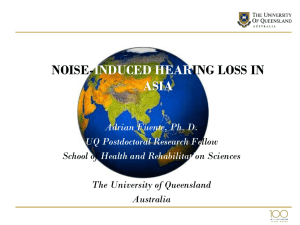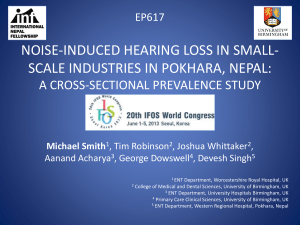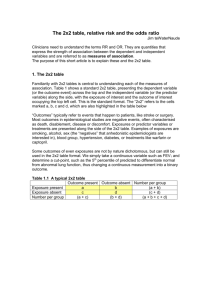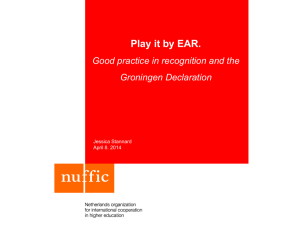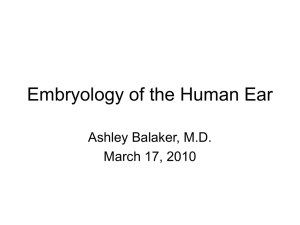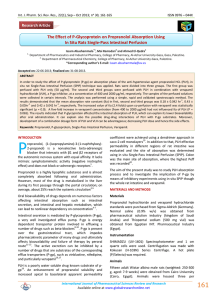Dr Elize de Koker – Instruction 171 in Practice
advertisement
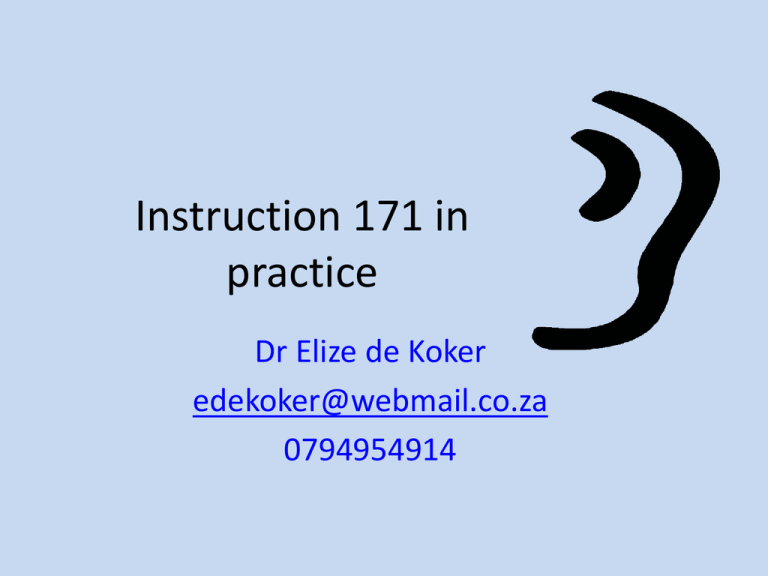
Instruction 171 in practice Dr Elize de Koker edekoker@webmail.co.za 0794954914 Positive aspects • 1969- 1994: 3 frequencies used PBI. 3.5% workers compensable • 1995- Instruction 168. 4 Frequencies used. 25% lowered to 1.87%. 12.37% workers compensable • Instruction 171 . 4000Hz added. Positive aspects • Pure tone air conduction- gold standard • Every worker baselined • Possible to evaluate: - the influence on the quality of life of workers - the ability of workers to perform their job - evaluate the success of HCP - the cost of compensation to the industry Future challenges Although instruction 171 has been an improvement in our ability to serve the interest of our workers, Industry and Insurance Companies there are a few challenges to recognize • Pure tone air conduction screening used • Behavioural test -environment -worker -audiometrist - equipment • Differential diagnosis is not possible using only screening results available • Tests the whole auditory system • Incorrect data using only AC test Challenges 2. Screening results • Should test cochlear function (where NIHL develops) • Oto- acoustic emissions • High frequency audiometry • PLH shifts -Current monitoring tool • Mines report on shift in percentage hearing loss • Used for incidence of NIHL, deterioration in hearing and success of HCP (Milestone) • PLH actually defines the impairment/disability and not NIHL Records kept over 2.5 year period of 5% shifts: Reasons other than NIHL - Inter test variance (discussed later) - Wax - Middle ear infections - Perforations - Pseudohypacusis (data available for research) • • • • Tables place emphasis on 500 and 1000 Hz Motivation – important for speech reception NIHL more affected at high frequencies Conductive losses influence low frequencies more • 5% shifts thus often due to outer/middle ear problems • Audiology -10 dB inter test differences are acceptable and not seen as significant. - between 2 different tests on same day - 2 test done by 2 different audiometrists - 2 test done on different equipment Recognized in BL but not in - compensation calculations - monitoring of NIHL - milestones Example – inter test differences Left-dB Right-dB 20-30 30-40 40-50 40-50 40-50 20-30 30-40 30-40 40-50 50-60 16.4% 32.2% – Left-dB Right-dB 20-30 30-40 40-50 40-50 40-50 20-30 30-40 30-40 40-50 50-60 16.4% 32.2% % 20.7 • 500 Hz- 20 dB • 1000 Hz- 30 dB • 2000 Hz-40 dB • 3000 Hz-40 dB • 4000 Hz-50 dB % 29.8 • 500 Hz-30 dB • 1000 Hz-35 dB • 2000 Hz- 45 dB • 3000 Hz-45 dB • 4000 Hz-55 dB • Difference of 9.1% PLH does not take age into consideration Normative data needed in RSA. What is the age distribution of workers being compensated? What % shift can be expected with ageing? • Influence of other diseases • Possibility of different pathologies in one person • How do we differentiate between recreational and occupational exposure • HIV - upper respiratory infections - ARVs - virus itself • MDR TB- ototoxicity • Middle ear pathology Example of co-morbidity • Asymmetry Challenges 6. Unavailability of industry BLs • Difficult for audiologist to make appropriate recommendations • Have to do 2 tests without a BL
